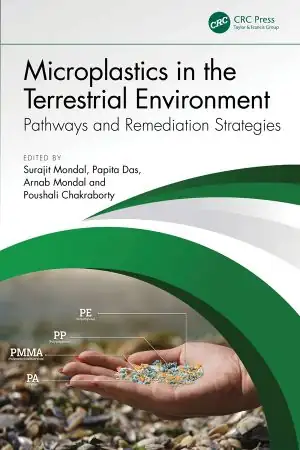
Radiography in the Digital Age, 3rd Edition
- Length: 900 pages
- Edition: 3
- Language: English
- Publisher: Charles C Thomas Pub Ltd
- Publication Date: 2018-05-01
- ISBN-10: 0398092141
- ISBN-13: 9780398092146
- Sales Rank: #77313 (See Top 100 Books)
Radiography in the Digital Age: Physics – Exposure – Radiation Biology – Third Edition
Long overdue, this new work provides just the right focus and scope for the practice of radiography in this digital age, covering four entire courses in a typical radiography program. The entire emphasis of foundational physics has been adjusted in order to properly support the specific information on digital imaging that will follow. The paradigm shift in imaging terminology is reflected by the careful phrasing of concepts, accurate descriptions and clear illustrations throughout the book. There are 713 illustrations, including meticulous color line drawings, numerous photographs and stark radiographs. The two chapters on digital image processing alone include 60 beautifully executed illustrations. Foundational chapters on math and basic physics maintain a focus on energy physics. Obsolete and extraneous material has been eliminated, while concepts supporting digital imaging are more thoroughly discussed. All discussion of electricity is limited to only those concepts which bear directly upon the production of x-rays in the x-ray tube. Following is a full discussion of the x-ray beam and its interactions within the patient, the production and characteristics of subject contrast, and an emphasis on the practical application of radiographic technique. This is conventional information, but the terminology and descriptions used have been adapted with great care to the digital environment. No fewer than ten chapters are devoted directly to digital imaging, providing extensive coverage of the physics of digital image capture, digital processing techniques, and the practical applications of both CR and DR. Image display systems are brought up to date with the physics of LCD screens and electronic images. PACS and medical imaging informatics are also covered. Chapters on Radiation Biology and Protection include an unflinching look at current issues and radiation protection in practice. The radiation biology is clearly presented with numerous lucid illustrations, and a balanced perspective on radiation and its medical use is developed. To reinforce mathematical concepts for the student, dozens of practice exercises are strategically dispersed throughout the chapters, with answer keys provided in the appendix. Extensive review questions at the end of each chapter give a thorough, comprehensive review of the material learned. The Instructor Resources for Radiography in the Digital Age, available on disc, includes the answer key for all chapter review questions and a bank of over 1500 multiple-choice questions for instructors use. It also includes 35 laboratory exercises, including 15 that demonstrate the applications of CR equipment.
Table of Contents
Part I: THE PHYSICS OF RADIOGRAPHY
Chapter 1: INTRODUCTION TO RADIOGRAPHIC SCIENCE
Chapter 2: BASIC PHYSICSFOR RADIOGRAPHY
Chapter 3: UNIT CONVERSIONS AND HELP WITH MATH
Chapter 4: THE ATOM
Chapter 5: ELECTROMAGNETIC WAVES
Chapter 6: MAGNETISM AND ELECTROSTATICS
Chapter 7: ELECTRODYNAMICS
Chapter 8: X-RAY MACHINE CIRCUITSAND GENERATORS
Chapter 9: THE X-RAY TUBE
Chapter 10: X-RAY PRODUCTION
Part II: PRODUCTION OF THE RADIOGRAPHIC IMAGE
Chapter 11: CREATION OF THE RADIOGRAPHIC IMAGE
Chapter 12: PRODUCTION OF SUBJECT CONTRAST
Chapter 13: VISIBILITY QUALITIES OF THE IMAGE
Chapter 14: GEOMETRICAL QUALITIES OF THE IMAGE
Chapter 15: MILLIAMPERE-SECONDS (mAs)
Chapter 16: KILOVOLTAGE-PEAK (kVp)
Chapter 17: GENERATORS AND FILTRATION
Chapter 18: FIELD SIZE LIMITATION
Chapter 19: PATIENT CONDITION, PATHOLOGY, AND CONTRAST AGENTS
Chapter 20: SCATTERED RADIATION AND GRIDS
Chapter 21: THE ANODE BEVEL AND FOCAL SPOT
Chapter 22: SOURCE-TO-IMAGE RECEPTOR DISTANCE (SID)
Chapter 23: OID AND DISTANCE RATIOS
Chapter 24: ALIGNMENT AND MOTION
Chapter 25: ANALYZING THE LATENT RADIOGRAPHIC IMAGE
Chapter 26: SIMPLIFYING AND STANDARDIZING TECHNIQUE
Chapter 27: USING AUTOMATIC EXPOSURE CONTROLS (AEC)
Part III: DIGITAL RADIOGRAPHY
Chapter 28: COMPUTER BASICS
Chapter 29: CREATING THE DIGITAL IMAGE
Chapter 30: DIGITAL IMAGE PREPROCESSING AND PROCESSING (RESCALING)
Chapter 31: DIGITAL IMAGE POSTPROCESSING
Chapter 32: POSTPROCESSING OPERATIONS IN PRACTICE
Chapter 33: APPLYING RADIOGRAPHIC TECHNIQUE TO DIGITAL IMAGING
Chapter 34: CAPTURING THE DIGITAL IMAGE: DR AND CR
Chapter 35: DISPLAY SYSTEMS AND ELECTRONIC IMAGES
Chapter 36: PACS AND IMAGING INFORMATICS
Chapter 37: QUALITY CONTROL
Chapter 38: MOBILE RADIOGRAPHY, FLUOROSCOPY AND DIGITAL FLUOROSCOPY
Part IV: RADIATION BIOLOGY AND PROTECTION
Chapter 39: RADIATION PERSPECTIVES
Chapter 40: RADIATION UNITS AND MEASUREMENT
Chapter 41: RADIATION BIOLOGY: CELLULAR EFFECTS
Chapter 42: RADIATION BIOLOGY: ORGANISM EFFECTS
Chapter 43: RADIATION PROTECTION: PROCEDURES AND POLICIES
Appendix #1: ANSWERS TO CHAPTER EXERCISES
Appendix #2: ARRT STANDARD DEFINITIONS







